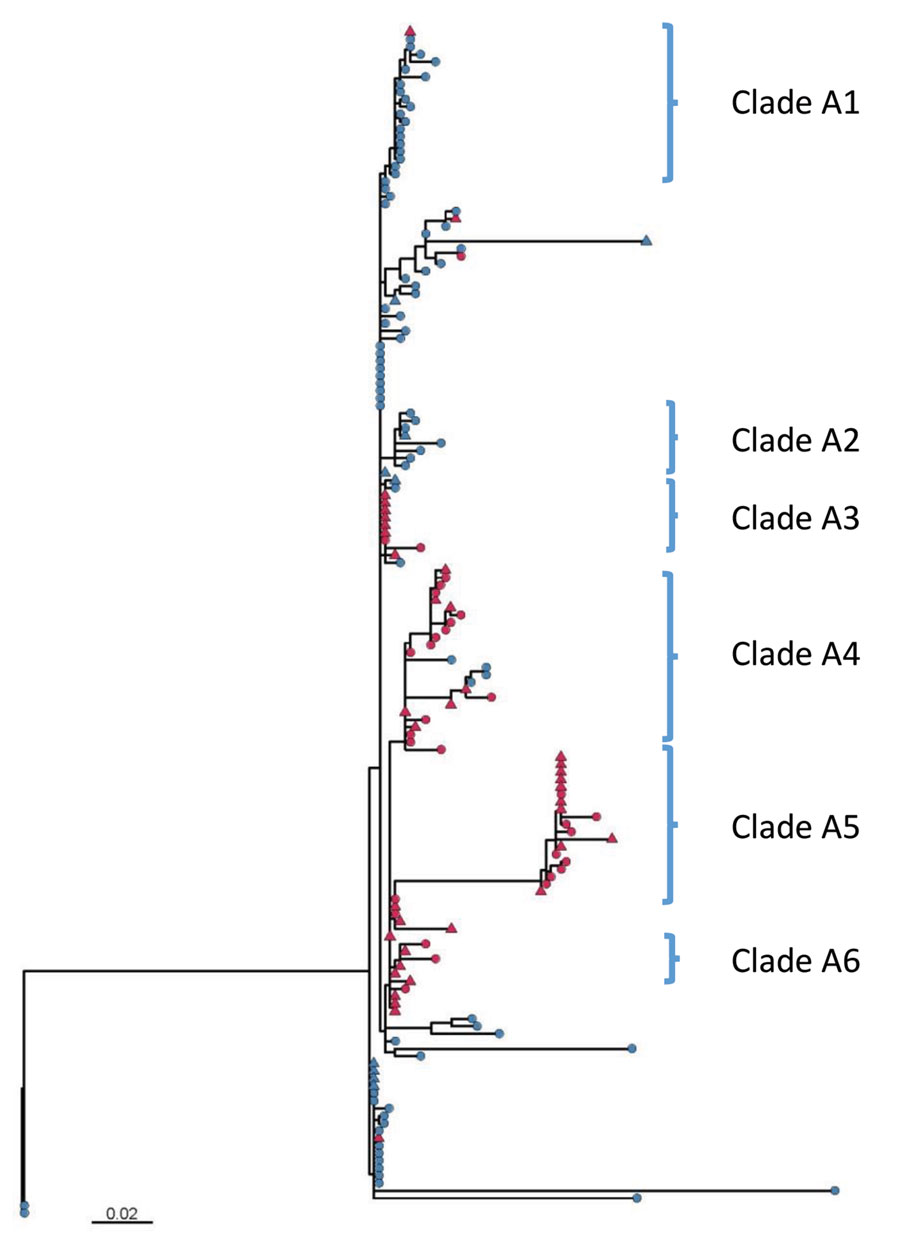Volume 27, Number 7—July 2021
Research
Whole-Genome Analysis of Streptococcus pneumoniae Serotype 4 Causing Outbreak of Invasive Pneumococcal Disease, Alberta, Canada
Figure 3

Figure 3. Maximum-likelihood core SNV phylogenetic tree of 159 Streptococcus pneumoniae serotype 4 ST244 isolates collected in Alberta, Canada, 2010–2018. A total of 615 sites were used in the phylogeny, and 97.4% of the core genome was included. An internal isolate SC19-3744-P (oldest outlier) was used as a mapping reference and root. Red nodes indicate isolates from the Calgary region, blue nodes those from Edmonton; triangles indicate association with homelessness. Scale bar indicates genetic distance. SNV, single nucleotide variant; ST, sequence type.
Page created: April 23, 2021
Page updated: June 16, 2021
Page reviewed: June 16, 2021
The conclusions, findings, and opinions expressed by authors contributing to this journal do not necessarily reflect the official position of the U.S. Department of Health and Human Services, the Public Health Service, the Centers for Disease Control and Prevention, or the authors' affiliated institutions. Use of trade names is for identification only and does not imply endorsement by any of the groups named above.